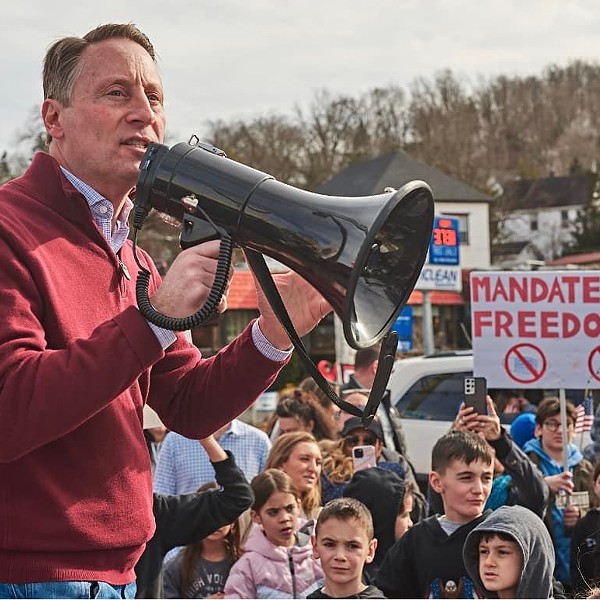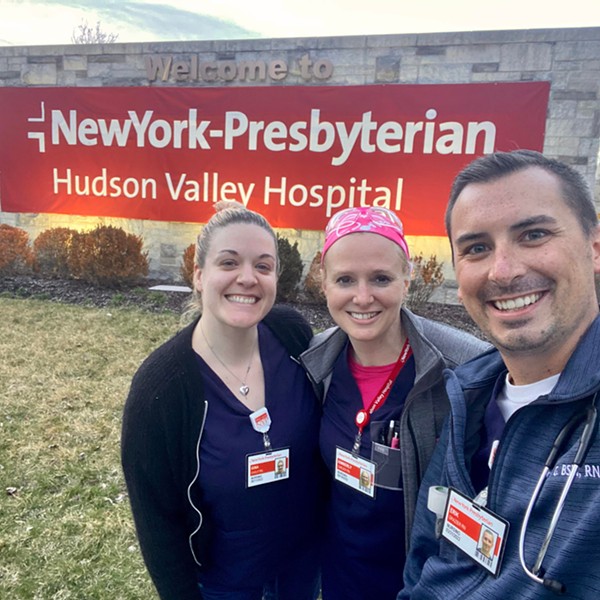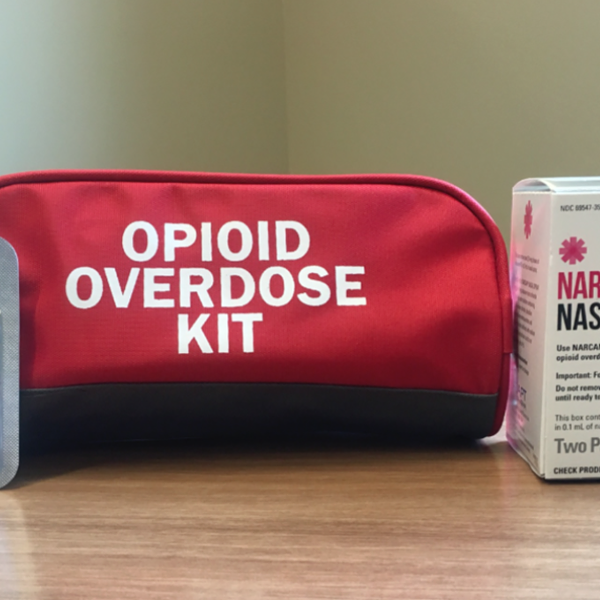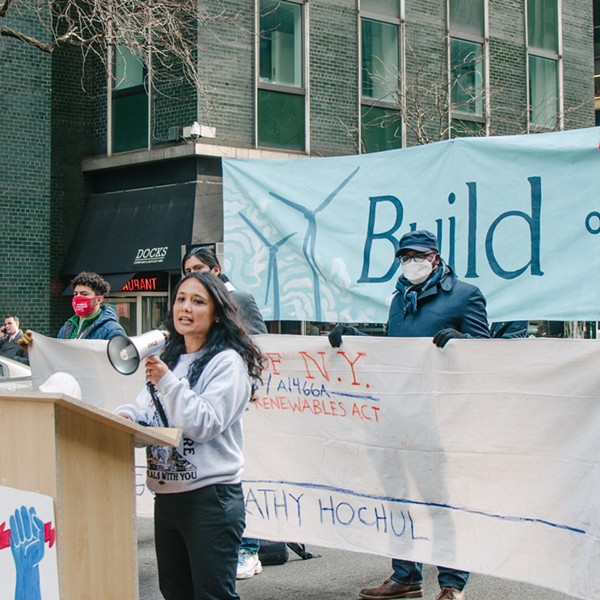In early spring 2020, just as COVID-19 was beginning to sink its spike proteins into our nation, Kingston’s HealthAlliance of the Hudson Valley hospital shut down its Mary’s Avenue behavioral health unit and transferred its services across the river to Poughkeepsie. The move, orchestrated by HealthAlliance’s parent company, Westchester Medical Center Health Network (WMCHealth), was widely condemned by public officials and healthcare professionals. Just six weeks earlier, HealthAlliance—which (under WMCHealth) operates two hospital campuses in Kingston and a hospital and nursing home in Margaretville—had signed off on a community health needs assessment that vowed to promote mental health and prevent substance abuse. Now, the region was losing its 60-bed mental health, detox, and rehab inpatient unit at Mary’s Avenue, and the change couldn’t come at a worse moment. The beds were ostensibly freed up for COVID patients (though they were never used as such), and WMCHealth has consistently evaded the question of when, or if, the services will return to Ulster County. Meanwhile, the pandemic has only increased the need for the unit’s services: youth suicide rates are climbing and overdoses are at record levels.
The loss of the behavioral healthcare facility was the latest in a series of moves by WMCHealth to consolidate services and leadership across its network of 10 hospitals from Valhalla to Margaretville. And it wouldn’t be the last. Since acquiring HealthAlliance in 2016, WMCHealth has made a series of cost-cutting decisions in an effort to improve the hospitals’ financial position, often at the expense of community health needs. It has done so against a backdrop of rising concentration in the US healthcare system, as large health systems buy up local independent hospitals and consolidate services. Analysts expect that pandemic-induced financial pressures will only accelerate the trend.
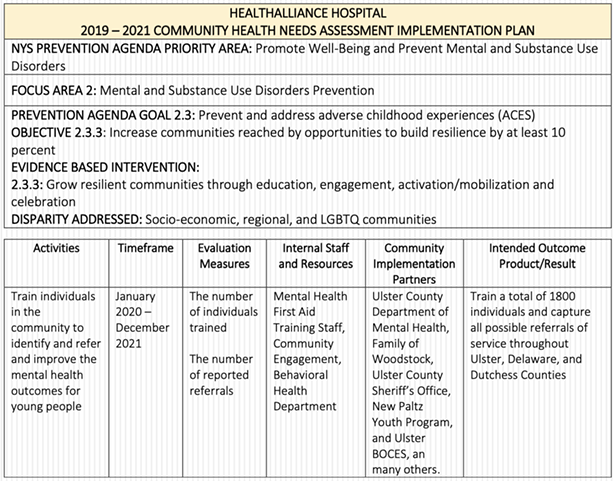
“There is an opportunity to enhance the quality of service through consolidation,” HealthAlliance CEO Michael Doyle said last summer, echoing the common refrain from hospital executives that consolidation improves efficiencies, reduces costs, and leads to better care coordination. Studies show that in fact, the opposite is true: consolidation usually increases prices and fails to improve the quality of care. Locally, it has resulted in painful layoffs that leave hospital teams overburdened and understaffed. WMCHealth laid off 41 staff members in Kingston this past June. “Some reduction in our workforce is necessary for operational efficiencies and responsible fiscal management of the organization,” officials said in a press release. Meanwhile, the dismissal of several veteran leaders this summer at the HealthAlliance hospital in Margaretville has stoked similar community fears about WMCHealth’s long-term vision.
“It’s all part of Westchester’s megaplan of how they’re going to operate ‘efficiently,’ from their point of view,” says Bill Hayes, chair of the National Alliance on Mental Illness’s Delaware and Otsego chapter. “While still looking like they’re providing services to the periphery of their catchment area.”
An Unsustainable Model
There is a crisis happening in behavioral health care. Overdose deaths in New York increased by nearly 28 percent between March 2020 and March 2021, and years of disinvestment and consolidation have pushed the industry to a breaking point. “We’re in trouble,” said Anne Constantino, president and CEO of Horizon Health Services in western New York, at a November hearing of the state Assembly mental health committee during which providers shared stories of workers leaving in droves due to burnout, stress, and low pay. “No matter how smart we are, no matter how efficient our business model, this industry cannot be sustained into the future without something radical happening.”
According to Randi DiAntonio, vice president of the state Public Employees Federation, more than 2,400 state-funded psychiatric beds have closed since 2010, leaving just 12 inpatient beds for every 100,000 New Yorkers. That’s far below the minimum of 50 per 100,000 considered necessary to provide adequate treatment for individuals with severe mental illness, according to the Treatment Advocacy Center, a national nonprofit that advocates for that population.
A version of this story has been playing out in Kingston since WMCHealth closed the Mary’s Avenue unit. Eighteen months later, it seems clear that it has no intention of bringing back the beds—though according to the state Office of Mental Health, WMCHealth has still not submitted the required Prior Approval Request to permanently take the beds offline.
In a statement to The River, WMCHealth officials said, “there’s been some incorrect information in the community on this topic,” noting that the emergency room at the Broadway campus “continues to be the long-established access point for behavioral health services locally.” That much is technically true, though until April 2020, any patient in crisis admitted to the Broadway ER could have been transferred less than a mile away to Mary’s Avenue. Patients must now be driven to MidHudson Regional in Poughkeepsie, which does not have the capacity to deal with the influx, leaving patients on both sides of the river waiting sometimes as long as a week for treatment. That has had lethal consequences in at least one instance: This summer, a 48-year-old man named Andy Neiman walked out of MidHudson Regional after waiting 14 hours for a psychiatric bed. His body was found a month later in the Hudson River.
WMCHealth says that “providing safe and effective behavioral health services to Ulster County residents remains a top priority,” but officials provide few details that substantiate that claim. Rather, they are quick to tout a $92 million renovation of the Mary’s Avenue campus, with new and expanded offerings in surgery, intensive care, and women’s health, plus a new cardiac catheterization laboratory, which opened this summer as the crisis of mental health and substance abuse worsened. In its statement to The River, WMCHealth officials said that they “continue to participate in discussions with elected officials, state agencies and other stakeholders regarding short- and long-term solutions for behavioral health services in the area,” and noted that HealthAlliance Hospital still has outpatient behavioral health services.
“A Slow, Painful Sinking”
WMCHealth has also said that the layoffs in Kingston would not affect quality of care, stating in a press release this summer that “patient safety will always be paramount at HealthAlliance.” But nurses at the hospitals have disputed this, publicly and privately. Some took to protesting weekly outside the Broadway campus this summer and fall, joined by elected officials and union representatives from the New York State Nurses Association. “As a result of the layoffs, I’m no longer able to provide the standard of care required,” RN Lawrence Clayton said at one rally.
Among those let go were charge nurses, techs, and 11 of 16 nurse leads—a non-union position created by HealthAlliance to help with administrative duties, assist bedside staff with care, and ensure everything on the floor runs smoothly. “These nurse leaders really helped us be able to survive that shift,” says RN Diane Fitzgerald. “So it was a monumental change for us to lose them.” After the layoffs, patient-to-nurse ratios more than doubled to as high as 10-to-1, making it more difficult to perform routine care like ensuring everyone gets dinner and repositioning patients to prevent bedsores. Nurses in the wound care unit were also reassigned, with wound care services outsourced to Restorix, a White Plains-based company.
Morale plummeted, creating a snowball effect that threatened to destabilize the entire hospital, says Fitzgerald, whose job as a float nurse takes her to all wards. “If you think about the Titanic hitting the iceberg, splitting in two, and slowly sinking—that is what we were going through this summer. It was just a slow, painful sinking into the freezing ocean.” Fitzgerald estimates that about 100 additional staffers have since left—not always for better pay, but because they were scared, overwhelmed, and exhausted. “Why would you stick around in this situation where you feel unheard and disrespected?” she says. “The language you hear from management is so debilitating. They called these nurse leaders ‘redundant.’”
In its statement to The River, WMCHealth officials said they are “aggressively recruiting additional employees to fill available positions,” including staffers laid off this summer. This is playing out amid a national shortage of nurses, though New York has a slightly higher number of nurses per capita than the country as a whole. The extra help is sorely needed. “Nursing has always been hard,” says Fitzgerald, a nurse of 17 years. “But this is an exorbitant type of hard. This is beyond human capacity for nurses to be able to care for their patients.”
Follow the Money
Hospital consolidation doesn’t come out of nowhere—it’s often an attempt to keep health systems solvent in an industry that’s infamous for its high overhead. The 2006 state-mandated merger of the former Kingston and Benedictine hospitals into HealthAlliance was an effort to put the facilities on sound financial footing. WMCHealth has tried its own efforts since taking over five years ago: further consolidating resources, laying off staffers, outsourcing services to contractors. The latest plan is a state-aid-funded transformation that will consolidate all hospital services in Kingston at the Mary’s Avenue campus, scheduled to be completed in 2022. Once it opens, the Broadway campus will be turned into a “health village” to deliver preventative and primary care.
Some form of change was inevitable, as HealthAlliance has been a financial millstone around WMCHealth’s neck since its 2016 acquisition. Tax filings show that the Kingston hospitals lost money in 2016, 2017, and 2018, and were barely profitable in 2019. In 2017, the Westchester County Health Care Corporation had an operating loss of $27.1 million, according to an independent audit of the company’s finances. The following two years saw a slight net operating income, but the company remained more than $300 million in debt at the end of 2019 due to bonds, capital leases, and other long-term obligations. The auditor’s report notes HealthAlliance’s working capital deficit, recurring operating losses, and noncompliance with certain financial debt covenant requirements. “The ongoing financial viability of HealthAlliance is not guaranteed by [the Westchester County Health Care Corporation],” it states.
In that context, consolidating costly inpatient services, such as psychiatric and detox treatment, makes sense, at least financially. In New York, the net patient revenue per psychiatric bed shrank from $99,000 in 2000 to $88,000 by 2018, adjusted for inflation, after the state lowered reimbursement rates in an attempt to “right-size” inpatient hospital capacity. “It’s more cost effective for them,” says Matthew Shapiro, associate director of public affairs for the New York chapter of the National Alliance on Mental Illness. “The big problem is that hospitals don’t get reimbursed the same way for long-term inpatient care as they do for physical issues or more acute short-term beds. The Medicaid reimbursements aren’t as good either.”
[googlemaps https://www.google.com/maps/d/embed?mid=1M90HfBe6qboRQIF-y9kNd4GVLZAItgKd&hl=en&w=640&h=480]
To fill the gap, Ulster County Executive Pat Ryan earmarked $16.5 million of the county’s $351 million 2022 executive budget for mental health and addiction, including $3.3 million in federal relief funds for a Mental Health and Addiction Recovery Center, which will provide residents a location for the full continuum of care for mental health and addiction-related illness. The first component will be a Crisis Stabilization Center, which is slated to begin development in 2022. In the meantime, the county is petitioning New York State and WMCHealth to reverse the decision to remove inpatient behavioral health services.
Executive Shake-ups and Cratering Morale
Workforce reductions aren’t always reserved for the rank and file. This summer, WMCHealth dismissed Margaretville Hospital Executive Director Mark Pohar as well as the director of nursing and the medical director at Mountainside Residential Care Center, which is affiliated with the hospital. Mountainside Administrator ??Chris Esola resigned out of concern about changes being asked for at the nursing home, which has made it this far in the pandemic without a single patient contracting COVID-19.
The shake-up sent shock waves through the rural facility, which is one of just 18 “critical access hospitals” in New York, a federal program that offers aid to small, rural hospitals to serve residents who would otherwise have to travel long distances for emergency care. “It really came as a surprise to everybody, because nobody knew this was coming down the line,” says Artie Martello, president of the hospital’s auxiliary and foundation, its primary fundraising apparatus. He says other staff resigned afterward, perhaps seeing the writing on the wall. “Because Westchester Medical Center decided to play the Red Queen and ‘off with their heads,’ we lost key people in the hospital. I went in for a COVID test and I can’t tell you how long I had to wait for a simple little thing up your nose.”
The reasons for the dismissals were not communicated to the hospital board, but one source with knowledge of the situation says the dismissals of Pohar and the Mountainside medical director were “purely financial.” Pohar does not appear to have been replaced by another executive director. “The corporate structure doesn’t understand a small community rural hospital,” says one source, who works with hospital leadership and requested anonymity to speak freely. “These are people who are not in touch with the community. They don’t live in the community, they don’t have expertise in the community. I think the concern is that everything has to go by corporate.”
All leadership at Margaretville Hospital and Mountainside is overseen by Michael Doyle, the executive director of HealthAlliance, who is seen by some in Margaretville as a puppet of WMCHealth. “If WMC tells Michael Doyle to do something, he has to do it,” Martello says. One therapist whose program ended up being terminated in the bloodletting put it this way: “Westchester is like this mothership, and we’re all supposed to be their drones and be happy to have any job whatsoever. It was this very odd sort of thing where they wanted us to continue. But they didn’t realize that we needed to want to continue with them.”
After the shake-up, rumors began flying that WMCHealth planned to close Margaretville Hospital. To quell concerns, WMCHealth organized a community “meet and greet” on September 2. Doyle traveled out, introducing Director of Operations Crystal Parrella as the “executive director” and mispronouncing her name, according to video of the event. “Margaretville Hospital is here, and it’s staying,” Doyle begins. “WMCHealth is committed…this facility is a cornerstone of the community.” A retinue of hospital leaders echoed the sentiment.
The meet and greet seems to have assuaged the worst-case fears over an imminent closure, but anxiety over WMCHealth’s long-term vision remained evident. Near the end of the event, a veteran Mountainside nurse named Suzanne Gladstone rose. She had spoken with a number of her coworkers, whom she called the “cement” of the facility, and presented herself as a spokesperson on behalf of them all. “While we all understand the need to right the ship…the decisions that are being made are deeply personal,” she said. Morale had cratered; the staff was working long, exhausting hours, only to be told that if they refused to cover additional shifts as needed, they would be charged with abandonment.
That the hospital continued to provide quality care was due to many of the people sitting in the crowd, Gladstone said—the nurses, techs, and aides who go to work every day with the specter of “operational efficiencies and responsible fiscal management” looming over them. Gladstone reassured the community: “We will take care of your family members at the hospital and Mountainside. We love them, we enfold them in our lives, they’re precious to us.”
What was WMCHealth’s plan for them?
This article was published in the December 2021 issue of Chronogram.












